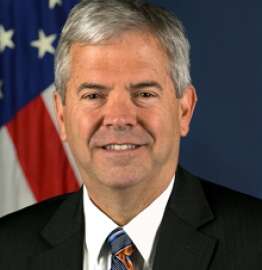New spending framework to take the guesswork out of IT decision-making
Better cost data will help agency CIOs make more informed decisions about moving to newer, more cost effective IT solutions, said Richard McKinney, the Transpor...
Agency technology shops could soon have a new way to measure and communicate just how much they’re spending on IT.
The Technology Business Management (TBM) Council, led by private and public sector chief information officers, is finalizing an IT cost taxonomy, said Richard McKinney, Transportation Department CIO and one of the council’s participants. Four working groups are tailoring the reporting system to fit federal governance processes now.
The framework is part of a broader report from the council’s Commission on IT Cost Opportunity, Strategy and Transparency (IT COST), which McKinney said should be out in March or April.
The new framework should take some of the guesswork out of the IT decision-making process, which McKinney said is often made more difficult because he and other CIOs lack good data on their IT expenses.
Better data would let CIOs better prove to agency leaders the value of making a major business decision, such as moving to a shared-service or cloud-service provider, McKinney said.
“That’s the most frustrating thing about trying to create a shared services environment: being able to make a business argument where you feel really confident that the value proposition you’re putting out is real, that you can back it up,” he said during a speech at the BMC Exchange Federal in Washington Feb. 2. “I made a number of shared services moves in DoT, but most of it’s been on gut instinct.”
The Council’s framework breaks IT costs into specific pools: labor, hardware/software, outside services, facilities and telecommunications, as examples. CIOs can further designate an item into more specific “IT towers.” This lets agency leaders see exactly which projects their IT dollars are supporting, and how much money they’re spending more broadly on email or messaging.
McKinney said the Office of Management and Budget is pleased with the cost reporting framework so far and expressed an interest in possibly implementing it across all agencies.
“If all [of] the federal government can adopt this, then we can have meaningful comparisons between departments and organizations and say, ‘one organization is charging X for a service and one is able to do it for Y,'” he said. “Maybe that can drive some shared services opportunities not just within agencies.”
Those opportunities are helping agencies like the Federal Communications Commission get rid of aging legacy systems in favor of more cost effective solutions.
When David Bray first took on the CIO job at the FCC in 2013, 85 percent of the agency’s IT budget went to operations and maintenance on its old legacy systems. Two years, later, the FCC spends less than 50 percent of its IT budget on O&M.
Now, those extra dollars are going toward cloud computing solutions, which Bray said is helping him free up more time and money to do other things.
“We were actually able to show that we could do something at one-sixth the price, but more importantly, in less than half the time, and in some cases, one-third or even one-fourth the time, as it would take if we did it on premise,” he said. “We had one case where actually in the past, it was $3.2 million, and the estimate was that it was probably going to take another 18-24 months to update it. We did it for less than $450,000 total, including contractor time, and we did it in less than six months.”
McKinney said his agency is still in a similar boat. Nearly 85 percent of DoT’s IT spend goes toward operations and maintenance, reflecting a governmentwide trend that continued well into 2015.
“That’s the road to nowhere,” McKinney said. “I have to figure out a way to try to figure out how to drive down my O&M so that I can repurpose this money for modernization, for legacy replacement.”
Better data will not only help agencies make those decisions more easily but also reverse a broader resistance to change.
“The effort is mostly cultural,” he said. “It’s not technical. It’s the proverbial herding of cats. It’s trying to get everybody on to the same page, to understand that we’re better off together. There’s more power together, and the efficiencies that we can get from a shared service environment could free up the resources that we need to tackle our legacy IT issues.”
Copyright © 2024 Federal News Network. All rights reserved. This website is not intended for users located within the European Economic Area.
Nicole Ogrysko is a reporter for Federal News Network focusing on the federal workforce and federal pay and benefits.
Follow @nogryskoWFED





